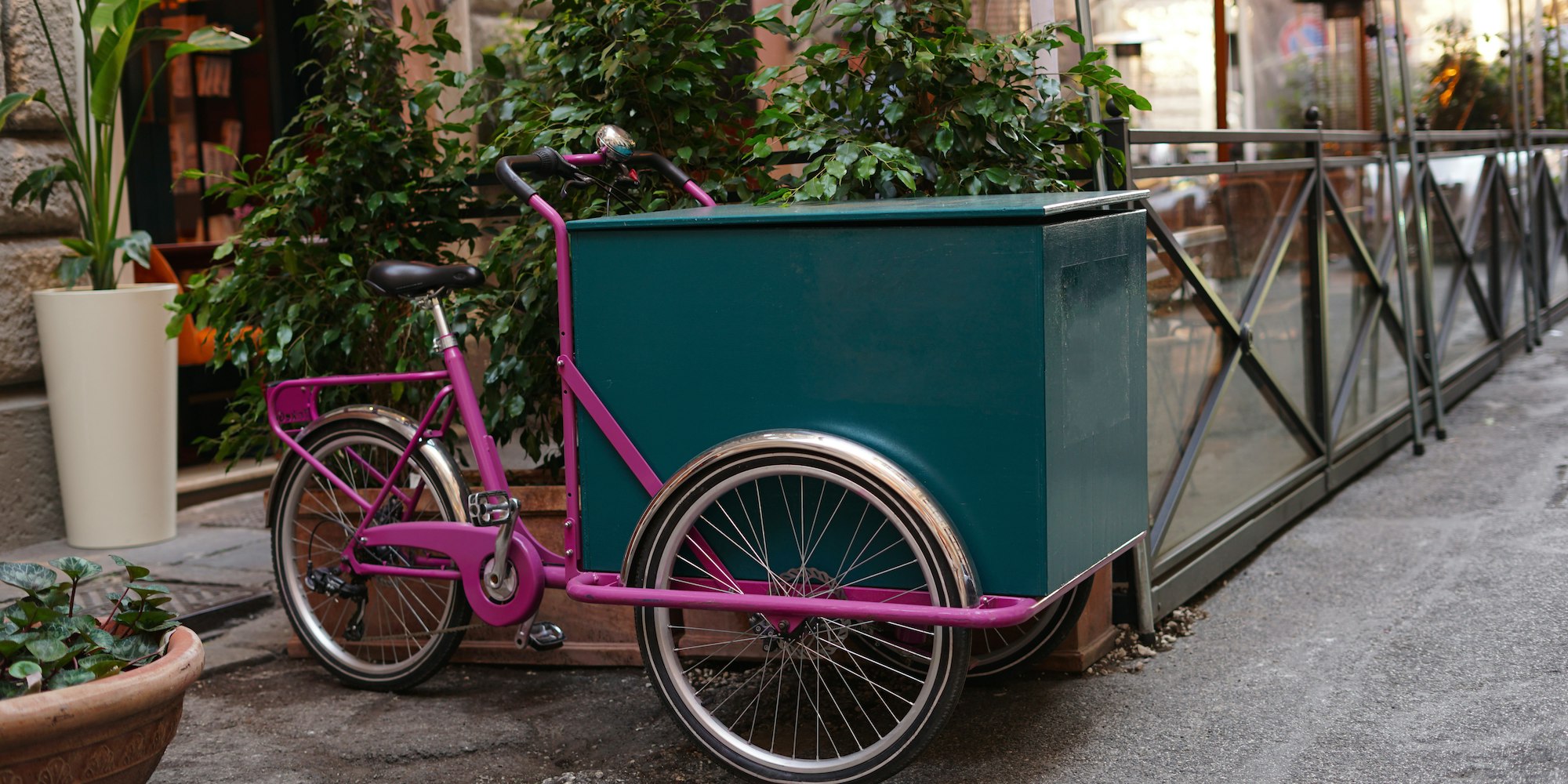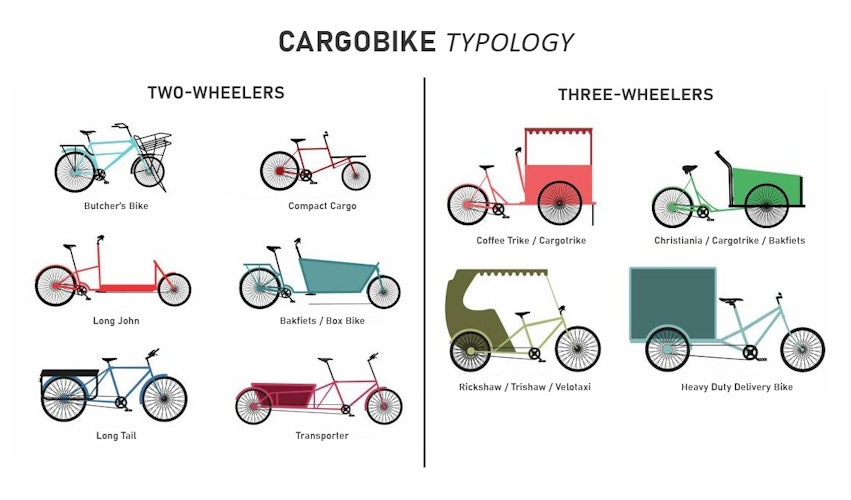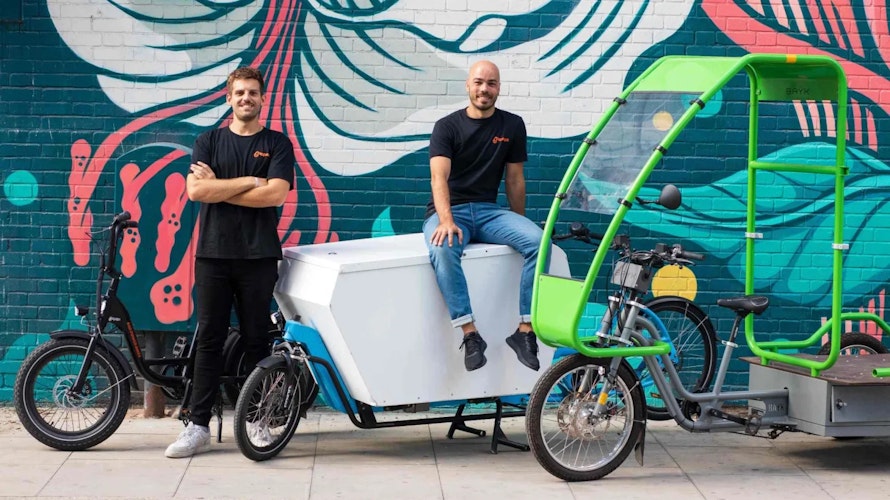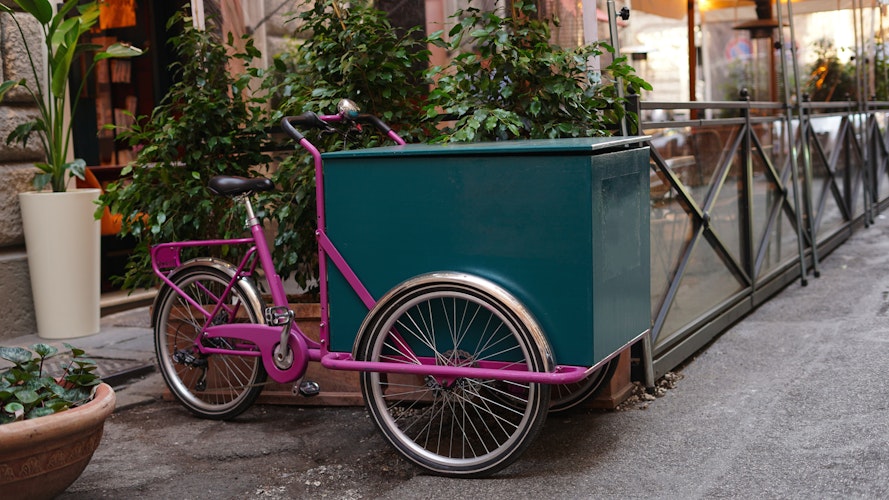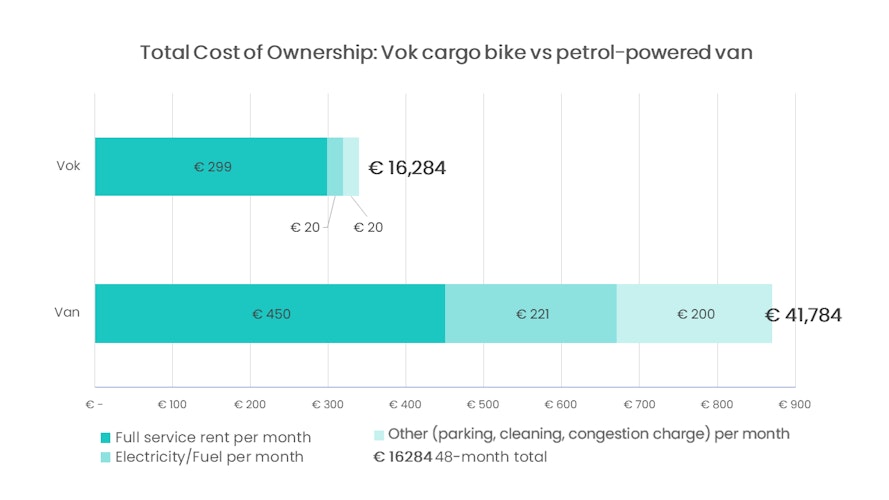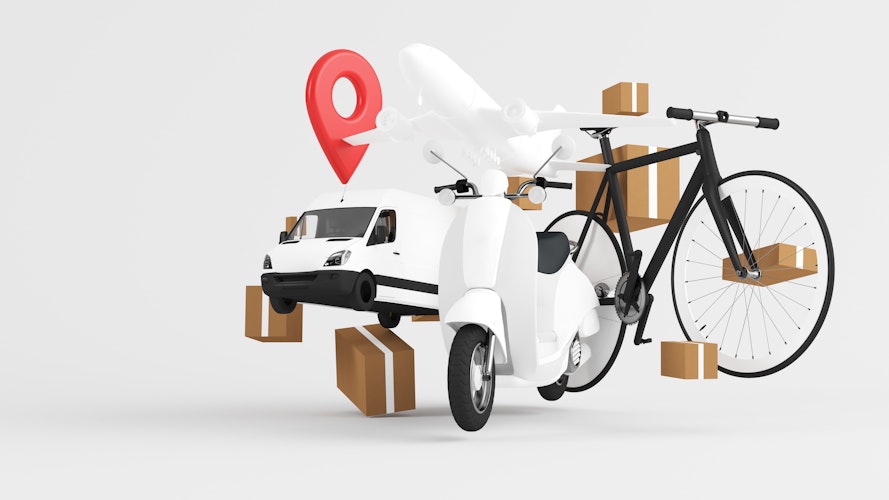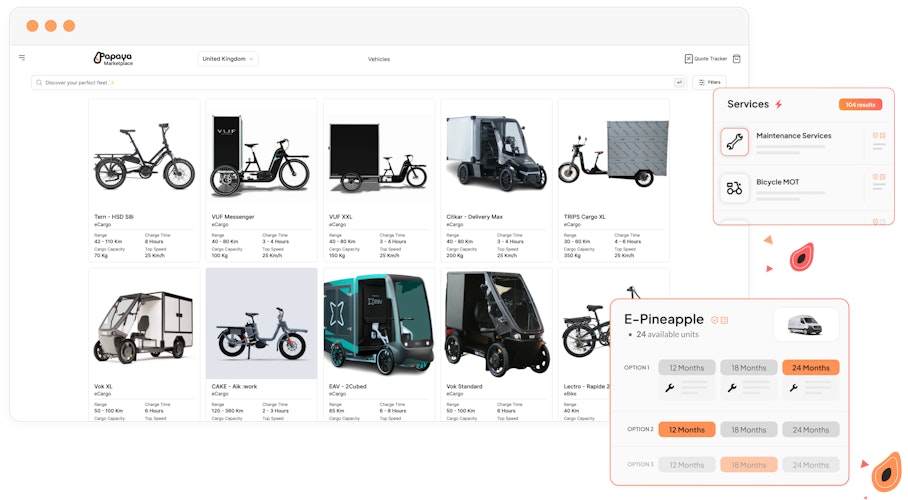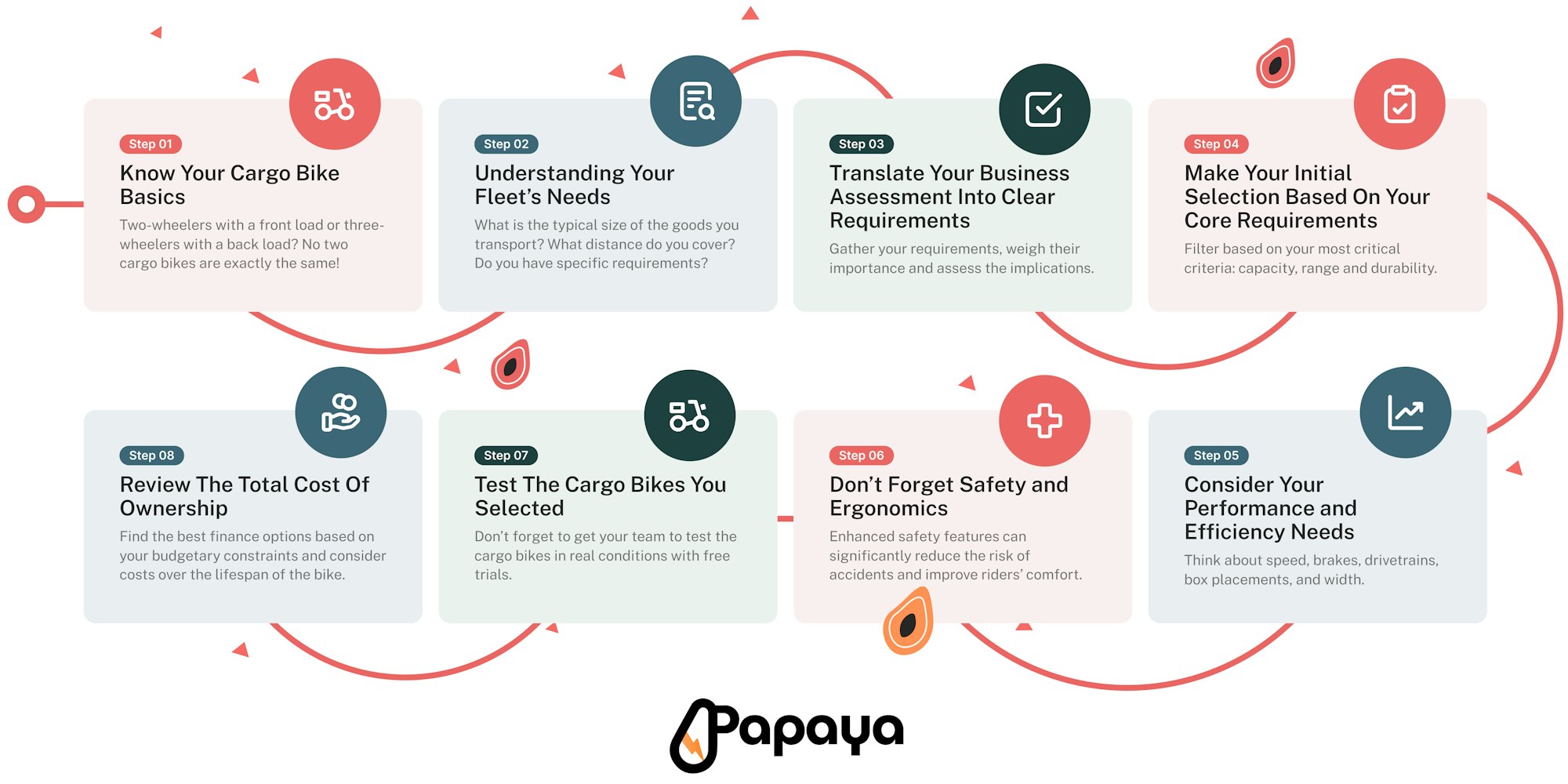Cargo Bikes 101 - Why Electric Cargo Bikes Are Perfect For Your Last-mile Fleet
Have you noticed anything unusual during your recent walks through through a busy city centre?
You may have seen a few e-vans, e-mopeds, or e-bikes, but you might also have spotted something different: a new type of "odd-looking" 3 or 4-wheelers with a front or back load used for deliveries. It may even have reminded you of E.T.'s bike. And you might have thought they might be perfect for your fleet but you don’t really know anything about them.
Well, that is why we are here!
Cargo bikes are becoming increasingly popular for several reasons. They produce less pollution, reduce congestion, improve city air quality, take up less space, can offer higher average speed than cars or vans in urban environment and flexibility, and promote good health, to name a few.
This is why electric cargo bikes are becoming the preferred mode of transport for many last-mile companies and are considered the future of urban mobility.
However, electric cargo bikes come in various shapes, forms, and sizes. Comparing specifications and finding the right type of cargo bike for your needs can be as complicated as E.T. trying to come back home.
To help you, we have put together a series summarizing everything you need to know about cargo bikes. So, without further ado, let's begin with an article summarizing the basics of cargo bikes and why they can be the perfect addition to your commercial fleet.
The Basics of Commercial Electric Cargo Bikes
What in the world is a commercial electric cargo bike?
Cargo bikes are not a new invention; they have been used around the world for centuries, from Holland to India, where rickshaws are a common sight.
An electric cargo bike is essentially an electric bike with a built-in cargo area, located at the front or back. This cargo area can be an open or enclosed box, a flat platform, or a basket. E-cargo bikes are designed specifically for easy transportation of heavy loads over long distances, while taking up less space than a car or van.
Non-electric cargo bikes have been available for a while, but they may not be as suitable for carrying heavy loads. Electric versions are easier to use and manoeuvre, more comfortable, and can accommodate a wider range of riders, use cases, and fitness levels, making them ideal for commercial use.
There may be as many types of cargo bikes as there are varieties of papaya.
Source: https://www.bleeperactive.com/blog/bike-to-work-for-cargo-bikes
While there are many types of electric cargo bikes available in the market, the most commonly used for commercial fleets are Long Johns, box bikes, and rear-load cycles. Let’s have a closer look:
Two-wheelers feel the most like regular bikes. They come with a cargo area either at the front or the back. They are lighter, faster, and easier to manoeuvre. However, they are harder to balance, which limits the amount of load they can carry safely.
Three-wheelers are more stable, wider than two-wheelers and can therefore hold heavier loads. They are also easier to load and unload.
Four-wheelers are quite recent and are mostly used by businesses requiring large cargo capacity. They are the most stable due to the even distribution of weight.
Long Johns have two wheels and an extra-long wheelbase at the front of the bike. The cargo area is mounted low between the rider and the first wheel, making it easier to carry heavy loads.
Box bikes or Bakfiets are three-wheelers with a cargo box in front. Steering requires the rider to turn the entire box, which may take some getting used to and might be more challenging with heavier loads.
Rear-load tricycles or quadricycles are especially heavy-duty e-cargo bikes designed to carry hundreds of kilograms of load. With their cargo compartment mounted behind the rider, they are usually stable and nimble.
As a Fleet Manager, Why Should I Consider Using Electric Cargo Bikes For My Fleet?
New regulations require new ways of running businesses
What do cargo bikes have to do with regulations and compliance? Well, many things!
Many cities and countries embrace net-zero policies, plan to ban the sale of internal combustion engine vehicles by 2030, and introduce new sustainability and ESG reporting requirements for companies, such as CSRD.
Supply chain emissions typically account for 90% of a company's total emissions and last-mile emissions typically account for about 5% of supply chain emissions. Companies with large fleets have to find ways to comply and reduce their impact by rethinking their last-mile fleets.
That’s why electric cargo bikes are becoming increasingly popular worldwide. They are an excellent way for fleet managers to achieve net-zero while maintaining their operations; as they combine the flexibility and benefits of a bike with the capacity and comfort of a small van.
Indeed, up to 25% of loads currently carried by light vans could be easily transferred to cargo bikes, which could in turn reduce van mileage in central London by up to 17% in 2030.
The best part? Fleet operators don't even have to compromise on anything to achieve these emission gains. Switching to electric cargo bikes offers fleet managers multiple benefits beyond their environmental impact.
The (Many) Benefits of Electric Cargo Bikes
They pollute less: As discussed above, cargo bikes offer fantastic low-carbon transport options. Some studies suggest that cargo bikes cut carbon emissions by 90% compared with diesel vans, and 33% compared with electric vans. They help curb the carbon footprint of your deliveries and overall business operations.
They are cheaper: Electric cargo bikes can cost anywhere from €2000 to €16000 (£1,500 to £15,000), making them more affordable options. They become even more cost-effective when you consider their Total Cost of Ownership. In 2023, it was estimated that local authorities in the UK could save £660 million just by switching to electric cargo bikes! They have lower upfront costs, reduced maintenance expenses, and no fuel costs, as they rely on electric power. Businesses can also avoid the costs associated with parking, tolls, and congestion charges and even benefit from subsidies, grants or tax breaks.
They are more efficient: Electric cargo bikes can navigate through congested urban areas and narrow streets more efficiently than larger vehicles. They can bypass traffic jams, park easily, and access restricted zones, allowing for quicker and more efficient deliveries. This increased efficiency can lead to higher productivity and shorter delivery times. A 2021 study even showed that e-cargo bikes can make deliveries up to 60% faster!
They are easy to use and operate: Cargo e-bikes do not require a specific driving license or physical abilities. They can be used by employees of all ages and physical abilities, regardless of the local geography. They can even improve physical fitness and overall well-being.
They make cities better places to live: Electric cargo bikes are quieter and less polluting, making cities more liveable and healthier for everyone.
They can boost your brand image: Incorporating electric cargo bikes into a business's fleet can enhance its brand image and reputation and demonstrates a forward-thinking and innovative approach to logistics and delivery.
Can I Use Electric Cargo Bikes For My Business?
Still not convinced? What if we told you that many industries already rely heavily on cargo bikes for their day-to-day operations?
Cargo bikes are versatile; so whether it's delivering goods, providing services, or enhancing customer experiences, cargo bikes offer a sustainable and efficient alternative to conventional transportation methods in various industries. From delivery services to maintenance and hotels, the use cases are almost endless. In fact, research shows that more than half of all city freight journeys could be carried out via cargo bike so most businesses using light commercial vehicles for their operations can benefit from them.
If you are concerned about capacity, don't worry! Since vans are often not fully loaded, electric cargo bikes are excellent alternatives, even with their smaller capacity.
We have compiled some examples of industries that can benefit from adding cargo bikes to their fleets:
E-commerce and Delivery Services: Online retailers, courier services, and food delivery platforms can greatly benefit from cargo bikes for last-mile deliveries.
Urban Logistics and Postal Services: Cargo bikes are particularly well-suited for navigating congested city streets, making them ideal for urban logistics and postal services.
Food and Beverage Industry: Cargo bikes equipped with insulated boxes or specialised compartments can ensure the safe transportation of temperature-sensitive items like meals, beverages, and even ice cream.
Event Management and Catering: Cargo bikes offer a unique and eye-catching solution to transport equipment, supplies, and food to event venues, parks, or outdoor locations.
Retail and Local Businesses: Local businesses, such as boutique shops, florists, and artisanal producers, can use cargo bikes for local deliveries and transporting their products.
Maintenance and Repair Services: Cargo bikes can help service providers (e.g. plumbing, electrical work, appliance repair) to transport tools, equipment, and spare parts to job sites.
Tourism and Hotel Industry: Cargo bikes can be used for delivering amenities or room service orders.
And many more….
So, How Can I Get Started With Cargo Bikes?
If you're excited to start using cargo bikes for your commercial fleet, the only thing missing now is a strategy. As you may have realised, the sheer variety of cargo bikes available makes it a difficult market to navigate without a strategic approach.
Failing to understand your business and fleet requirements might lead to choosing the wrong cargo bikes, which could end up disrupting your operations more than helping them. To make informed decisions and invest in the right cargo bike for your fleet, you need to understand how your current fleet operates and what basic specifications to look out for in a cargo bike.
So, how can you achieve that?
Read the next article in this series (here) to learn how to conduct an effective business and fleet assessment and what factors to consider, to find the best cargo bike for your specific requirements.
Get in touch with Papaya’s experts. We have extensive expertise in cargo bikes and commercial fleets and we can accompany you on your journey. Our team can help you calculate how much you could save, both in terms of emissions and costs, when switching to EVs, based on your current routes, vehicle types etc..
Rely on Papaya’s ecosystem. From identifying and getting the perfect cargo bikes by using Papaya’s Marketplace, to managing your fleet through Papaya’s fleet management system, you’ll get all the tools you need to effectively operate your fleet and cargo bikes in a single platform.
Whether your fleet is already 100% electric, exclusively composed of cargo bikes, or you are still operating with multiple vehicle types, Papaya's platform is agnostic. Our software can help you gain a better understanding of your fleet, identify areas for improvement, streamline your operations, and support the transition to a more sustainable fleet, helping you achieve your objectives step by step.
